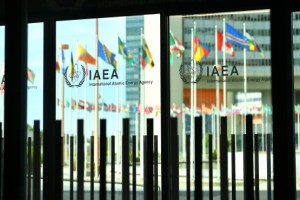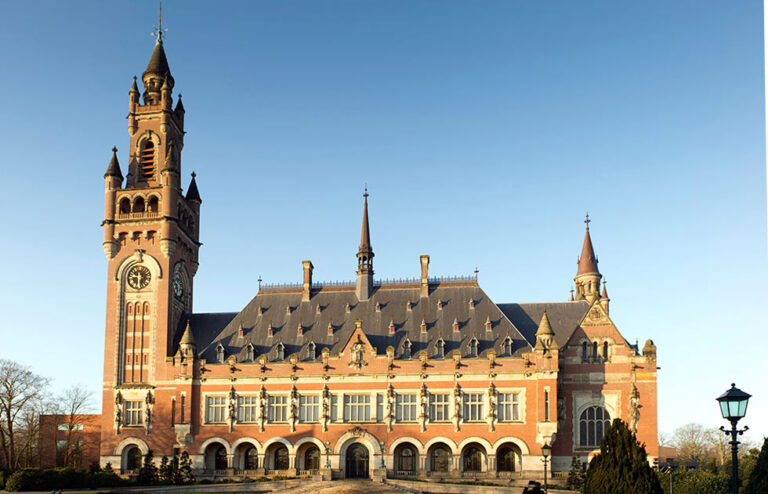
Vienna: Strengthening the effectiveness and improving the efficiency of International Atomic Energy Agency (IAEA) safeguards, and the application of the safeguards in North Korea and the Middle East, is in the agenda of the Agency’s 65th annual General Conference (GC) that begins here tomorrow and will continue till September 24, 2021.
The crucial meeting of the IAEA, which is the world’s foremost forum for scientific and technical cooperation in the peaceful use of nuclear technology, is expected to draw high level representatives from the IAEA’s 173 Member States. The GC will also elect new members to the Board of Governors, approve the IAEA’s 2020 annual report and financial statement, its programme and budget for 2022 to 2023 and appoint the Agency’s external auditor.
The GC meets at the backdrop of IAEA’s statement of August 30, 2021 that it is “deeply troubled” by apparent indications of North Korea resuming its 5-megawatt Yongbyon nuclear reactor, which is widely believed to have produced plutonium for nuclear weapons and is at the heart of North Korea’s nuclear programme.
With regards to Iran’s nuclear programme and strong concerns raised particularly by Israel, the IAEA Director-General Rafael Grossi, had visited Tehran and on September 12, 2021, issued a joint statement along with Mohammad Eslami, Vice-President and the Head of Atomic Energy Organization of the Islamic Republic of Iran. Both sides had decided to maintain their mutual interactions and meetings at relevant levels within the framework of the existing cooperation, and Eslami would be meeting Grossi again at the sidelines of the upcoming General Conference.
At one event at the GC, IAEA safeguards inspectors will discuss their work and experience in carrying out verification activities in the field and at IAEA headquarters enabling the IAEA to provide assurances that States are not diverting nuclear material from peaceful activities or misusing nuclear technology. In another event, IAEA safeguards analysts will explain how the analysis of environmental samples can pick out traces of nuclear material, e.g. uranium and plutonium, at weights below one trillionth of a gram, and how this tool supports safeguards verification activities and contributes to international peace and security.
With Small Modular Reactors (SMRs) widely regarded as offering significant potential for future nuclear energy generation, another event will cover the relevant safeguards considerations required for SMRs and how these can be integrated into their design processes. Another event will highlight the latest IAEA safety-related activities on novel advanced reactors, including SMRs, covering a range of topics from licensing to siting, design, commissioning and operation.
Significantly, there has been a considerable change in IAEA’s annual outlook as for the first time since the Fukushima Daiichi accident a decade ago in Japan, the Agency (IAEA) has revised up its projections of the potential growth of nuclear power capacity for electricity generation during the coming decades, as the world is looking up to nuclear power as a low-carbon source and many countries are considering to move away from fossil fuels to fight climate change. In the high case scenario of its new outlook, the IAEA now expects world nuclear generating capacity to double to 792 gigawatts (net electrical) by 2050 from 393 GW(e) last year.
Also read: The IAEA-Iran’s statement leaves questions unanswered on nuclear issues
The IAEA’s efforts in helping the world tackle the COVID-19 pandemic too will feature on this year’s agenda: “We continue to receive request for assistance. We are now not only delivering emergency aid, but also sourcing the necessary science and technology assistance to 129 countries to fight these frequently occurring viral outbreaks with nuclear techniques,” IAEA Director General Rafael Mariano Grossi told the Agency’s Board of Governors on September 13, 2021.
In this context, A two-day Scientific Forum titled “Preparing for Zoonotic Outbreaks: the Role of Nuclear Science” will be held on 21-22 September. The Forum will focus on the emergence of infectious diseases passed to humans from animals – zoonotic diseases – and will explore the role of nuclear and nuclear-derived techniques in their research, early detection and monitoring.
In five sessions, participants will discuss the pathways through which emerging infections can lead to pandemics, radiation techniques for disease characterization and management, and existing national and international initiatives to help countries better prepare for zoonotic disease threats, such as the IAEA’s Zoonotic Disease Integrated Action (ZODIAC) initiative, among others. Speakers from countries that have received IAEA support in managing zoonotic diseases will also share their experiences in detecting, identifying and managing Ebola, COVID-19, SARS, Bird Flu and MERS.
The GC will provide important guidance to the Agency on topics related to nuclear and radiation safety; activities regarding nuclear security; strengthening the IAEA’s activities in nuclear science, technology and applications, strengthening the Agency’s technical cooperation activities.
Throughout the General Conference, around 80 side events will be held, some in person and others virtually with a number of virtual events also open to the general public – all highlighting the innovative work underway at the IAEA and in Member States using nuclear techniques.
– global bihari bureau





